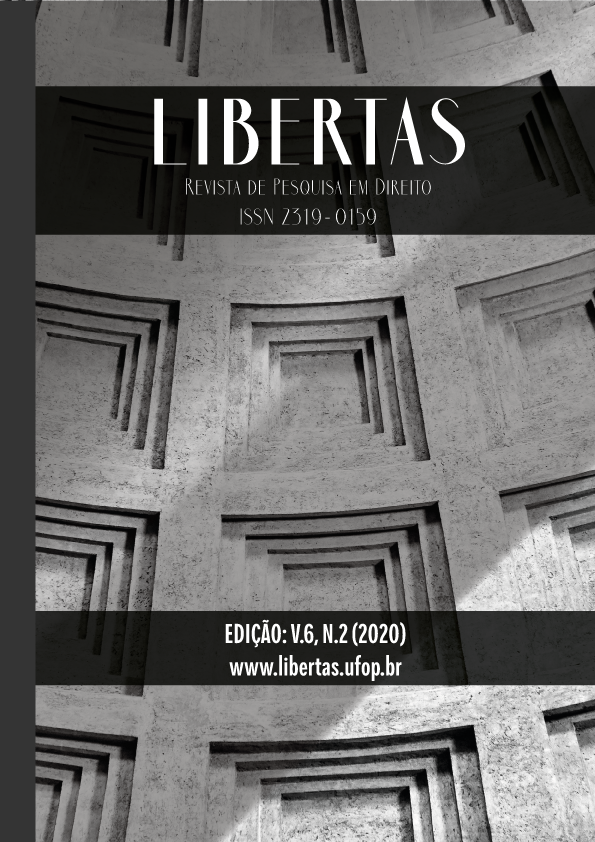A tensão entre público e privado no exercício das liberdades comunicativas nas redes sociais:
o caso de mensagens públicas de autoridades governamentais por meio de contas “privadas”
Abstract
This article addresses the impact that social networks can produce in the public-private relationship, when these are employed by political agents, as forms of interaction between government and governed, from the Knight First Amendment Institute at Columbia University v. Trump, in 2018. The hypothesis raised in the text is that traditional forms of analysis of these dimensions are insufficient in view of the complexity that emerges from the construction of virtual interactive spaces. In addition, we seek to demonstrate that any response to the new challenges of the virtual world must have as a backdrop the democratic requirements that shape freedom of expression, even though this conception needs to be reread and rewritten for other contexts. We have adopted a critical-methodological approach. In this sense, the theses and positions on freedom of expression presented in the court decisions worked in the text were read through a discursive and dialogical lens.
Downloads
References
BRIGGS, Samantha. The Freedom of Tweets: the intersection of government use of social media and public forum doctrine. Columbia Journal of Law and Social Problems. Vol. 52 (1), p. 01-38, 2018.
CARVALHO NETTO, Menelick de. A Contribuição do Direito Administrativo enfocado da ótica do administrado para uma reflexão acerca dos fundamentos do controle de constitucionalidade das leis no Brasil: pequeno exercício de Teoria da Constituição. Revista Fórum Administrativo, n.º 01, Belo Horizonte: Fórum Limitada, março, p. 11-20, 2001.
CATTONI DE OLIVEIRA, Marcelo Andrade. Comentário ao art. 1º, parágrafo único. CANOTILHO, J.J. Gomes; MENDES, Gilmar F.; SARLET, Ingo W.; STRECK, Lenio L. Comentários à Constituição do Brasil. SP: Saraiva/Almedina, 2013, p. 137-140.
CHADWICK, Andrew; MAY, Christopher. Interaction Between States and Citizens in the Age of the Internet: “e-Government” in the United States, Britain, and the European Union. Governance: An International Journal of Policy, Administration, and Institutions. Vol. 16 (2), April, p. 271-300, 2003.
CHEMERINSKY, Erwin. Rethinking State Action. Northwestern University Law Review. Vol.80, no.03, fall, p. 503-557, 1985.
CHEMERINSKY, Erwin. Content Neutrality as a central problem of freedom of speech: problems in the Supreme Court’s application. Southern California Law Review. Vol. 74, p. 49-64, 2000.
CORNELL UNIVERSITY. Portal Legal Information Institute. Disponível em:
FABER, Daniel A.; NOWAK, John E. The Misleading Nature of Public Forum Analysis: Content and Context in First Amendment Adjudication. Virginia Law Review. Vol. 70, No. 6, Sep., p. 1219-1266, 1984.
FISS, Owen M. Libertad de Expresión y Estructura Social. Trad. Jorge F. Malem Seña. México, D.F.: Biblioteca de Ética, Filosofía del Derecho y Política, 1997.
FISS, Owen M. A ironia da liberdade de expressão: estado, regulação e diversidade na esfera pública. Trad. Gustavo Binenbojm e Caio Mário da Silva Pereira Neto. Rio de Janeiro: Renovar, 2005.
HABERMAS, Jürgen. Era das Transições. Trad. Flávio Beno S. Rio de Janeiro: Tempo Brasileiro, 2003.
KNIGHT FIRST AMENDMENT INSTITUTE. Columbia University. Disponível em:
LAWRENCE, Charles R. Crossburning and the Sound of Silence: Antisubordination Theory and the First Amendment. Villanova Law Review. Vol. 37, no.04, p. 787-804, 1992.
LIDSKY, Lyrissa B. Public Forum 2.0. Boston University Law Review. Vol. 91. p. 1975-2028, 2011.
MATSUDA, Mary. Public Response To Racist Speech: considering the victim’s story. Michigan Law Review, Michigan, Vol. 87, aug. p. 2320-2381,1989.
NACHBAR, Thomas B. Paradox and Structure: relying on government regulation to preserve the Internet’s unregulated character. Minnesota Law Review. Vol. 85, p 215-318, 2000.
NUNZIATO, Dawn C. The Marketplace of ideas online. Notre Dame Law Review. Vol. 94 (4). p. 1519-1584, 2019.
NUNZIATO, Dawn C. From Town Square to Twitterphere: the Public Forum Doctrine Goes Digital. GWU Legal Studies Research Paper (No. 2018-40). Sep.14, p. 01-75, 2018. Disponível em:
OYEZ PROJECT. Portal do Oyez Project/Chicago-Kent College of Law.
Disponível em:
ROSENFELD, Michel. Just Interpretations: law between ethics and politics. Berkeley, California: University of California Press, 1998.
ROSENFELD, Michel. A Identidade do Sujeito Constitucional. Trad. Menelick de Carvalho Netto. Belo Horizonte: Mandamentos, 2003.
UNITED STATES SUPREME COURT CENTER. Portal Justia.Com. Disponível em:
WU, TIM. How Twitter Killed the First Amendment. Opinion (The New York Times). Oct. 27, 2017. Disponível em:
ZATS, Noah D. Sidewalks in Cyberspace: Making Space for Public Forums in the Electronic Environment. Harvard Journal of Law & Technology. Vol. 12 (1), Fall, p. 149-240, 1998.
ZICK, Timothy. Speech Out of Doors: preserving First Amendment liberties in public places. New York, NY: Cambridge University Press, 2008.
TÁBUAS DE DECISÃO
United States District Court, NY (2018) e United States Court of Appeals For the Second Circuit (2019): Knight First Amendment Institute At Columbia University v. Trump
Supreme Court of United States
Abrams v United States (1919)
NAACP v. Button (1963)
New York Times Co. v. Sullivan (1964)
Police Dept. of City of Chicago v. Mosley (1972)
Perry Education Association v. Perry Local Educators’ Association (1983)
Cornelius v. NAACP Legal Def. & Educ. Fund, Inc. (1985)
United States v. Kokinda (1990)
Rosenberger v. Rectors (1995)
Reno v. ACLU (1997)
Packingham v. North Carolina (2017)
Copyright (c) 2020 Libertas: Revista de Pesquisa em Direito

This work is licensed under a Creative Commons Attribution-NonCommercial-ShareAlike 4.0 International License.
Este obra está licenciado com uma Licença Creative Commons Atribuição-NãoComercial-CompartilhaIgual 4.0 Internacional.



